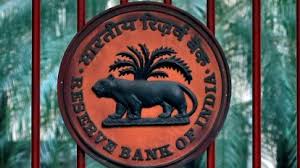20 Feb 2025 Indian Express Editorial
What to Read in Indian Express Editorial( Topic and Syllabus wise)
Editorial 1 : RBI’s Rupee Challenge
Context: India is vulnerable to a currency crisis.
Exchange Rate Dynamics and RBI’s Dilemma
- Global Context
- Capital Outflows: Pressure on the rupee stems from global capital seeking safe havens (e.g. the US dollar) due to geopolitical uncertainties and Trump-era policies.
- Dollar Strengthening: The US dollar’s rise reflects global risk aversion, impacting emerging market currencies, including the rupee.
- RBI’s Challenge
- Intervention Risks
- Depreciation Acceleration: A sharp rupee fall could trigger further capital outflows, creating a self-fulfilling cycle.
- Signalling Effect: Non-intervention by the RBI may signal weakness, worsening expectations.
- Trade-offs
- Defending the rupee drains forex reserves.
- Allowing depreciation risks inflationary pressures (e.g. higher import costs for oil).
- Intervention Risks
Long-Term Trends in Rupee Depreciation
- Historical Data
- Steady Decline
- Rupee/USD exchange rate rose from 45.56 (2010-11) to 82.78 (2023-24).
- Exceptions: Brief stability in 2017-18 and post-2008 rebound which ended in 2011.
- Monthly Trend: Consistent depreciation since September 2023.
- Underlying Causes
- Inflation Differential
- India’s inflation rates exceed global averages, eroding rupee’s purchasing power.
- Currency depreciation further fuels inflation via costlier imports.
- Structural Trade Deficits
- Persistent current account deficit.
- Remittances and capital inflows (e.g. FDI, portfolio investments) bridge gaps but create dependency.
Structural Economic Vulnerabilities
- Export Competitiveness
- Weak Manufacturing Exports: Lack of competitiveness limits FDI inflows tied to export-oriented sectors.
- Dependence on Volatile Capital: Reliance on portfolio flows (vs. stable FDI) increases vulnerability to sudden outflows.
- Forex Reserve Management
- Reserves as a Buffer: RBI uses reserves to stabilize short-term volatility.
- Limitations
- Reserves are finite; prolonged intervention erodes capacity.
- Reserves depend on capital inflows exceeding current account deficits.
Risks of Currency Crisis
- Historical Precedent
- Global examples (e.g. East Asian Crisis 1997) highlight risks of sudden, sharp depreciations.
- Periods of stability punctuated by irreversible drops (e.g. 2013 taper tantrum).
- Persistent Vulnerability
- Liberalization Legacy: Post-1990s reforms increased exposure to volatile capital flows.
- No Structural Fix: Depreciation has not corrected trade deficits or boosted export competitiveness.
Policy Implications
- RBI’s Balancing Act
- Manage Expectations: Avoid signalling panic while preventing excessive volatility.
- Inflation Control: Tackle domestic inflation to reduce depreciation pressure.
- Structural Reforms Needed
- Export Competitiveness: Boost manufacturing via policy incentives and infrastructure.
- Reduce Import Dependency: Diversify energy sources to mitigate oil price shocks.
- Stable Capital Flows: Encourage FDI over volatile portfolio investments.
Conclusion: India’s exchange rate management has avoided a full-blown currency crisis but remains structurally vulnerable. Addressing root causes (trade deficits, inflation, export weakness) is critical to reducing reliance on volatile capital and ensuring sustainable stability.


